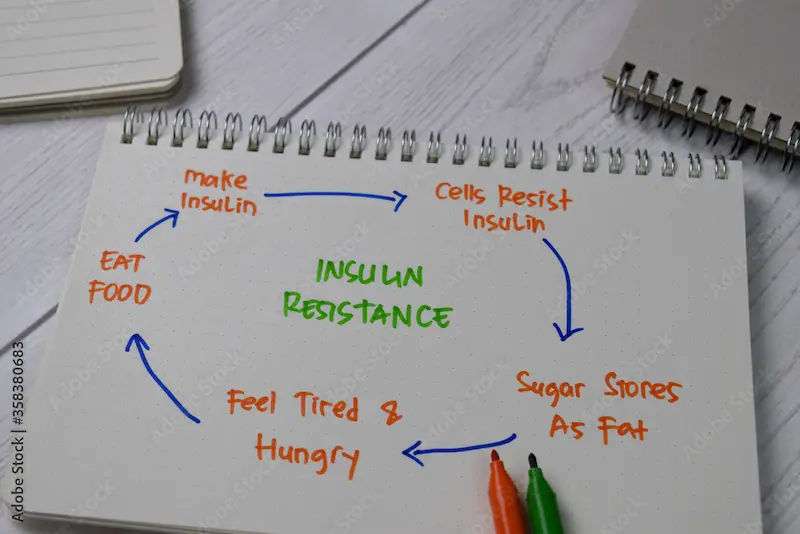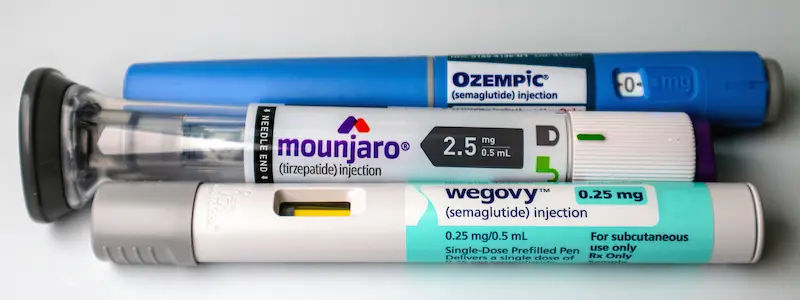Guide to Essential Foods Type 2 Diabetic
Discover the ultimate guide to smart food choices for Type 2 diabetes. Learn about essential food groups, top 10 power foods, meal planning tips, and lifestyle strategies to manage blood sugar effectively.

Written by Dr. Dhankecha Mayank Dineshbhai
Reviewed by Dr. Shaik Abdul Kalam MD (Physician)
Last updated on 8th Sep, 2025

Introduction
Receiving a diagnosis of Type 2 diabetes can feel overwhelming, especially when it comes to rethinking your diet. You might be asking, "What can I even eat?" The good news is that managing your blood sugar doesn't mean giving up on delicious food or feeling deprived. In fact, it’s about empowerment through knowledge—learning which essential foods for a diabetic diet can become powerful allies in your health journey. This guide moves beyond restrictive lists to provide a sustainable, positive framework for eating. We'll explore the science of how food affects your blood sugar, identify the best food groups and power foods to include on your plate, and offer practical tips for meal planning. By focusing on nutrient-dense, whole foods, you can take control of your health, improve your energy levels, and reduce the risk of complications. Let's build your essential grocery list together.
Understanding the Diabetes-Food Connection: It's More Than Just Sugar
Managing Type 2 diabetes is fundamentally about managing your blood glucose levels. Every bite of food you take plays a role in this delicate balance. While it's common to focus solely on sugar, the story is more complex and involves how your body processes different types of carbohydrates, the magic of fiber, and the supporting roles of protein and fat.
The Role of Carbohydrates, Fiber, and the Glycemic Index
- Carbohydrates are broken down into glucose (sugar), which enters your bloodstream. However, not all carbs are
created equal. - Simple Carbohydrates: Found in sugary drinks, candy, white bread, and pastries, these are digested quickly, causing a rapid spike in blood sugar and insulin.
- Complex Carbohydrates: Found in whole grains, legumes, and vegetables, these contain longer chains of sugar molecules and are digested more slowly, leading to a gradual rise in blood sugar.
This is where fiber and the Glycemic Index (GI) become essential. Fiber, especially soluble fiber, slows down carbohydrate digestion and sugar absorption, preventing those sharp spikes. The GI is a ranking system that measures how quickly a food raises blood sugar. Choosing low-GI foods (like most non-starchy vegetables and legumes) is a key strategy for stable blood glucose management.
The Power of Protein and Healthy Fats
Including lean protein and healthy fats in your meals is a game-changer. Protein helps slow the absorption of sugar into the bloodstream and promotes a feeling of fullness (satiety), preventing overeating. Healthy fats have a similar effect. They don't directly raise blood sugar and can improve insulin sensitivity. This combination is the cornerstone of a balanced diabetic plate, helping to flatten the blood sugar curve after meals.
The Essential Food Groups to Build Your Plate
Think of your diet in terms of powerful food groups rather than individual items. This approach ensures you get a wide
range of nutrients that work synergistically for better health.
Non-Starchy Vegetables: The Foundation of Every Meal
Fill half your plate with these low-carb, high-fiber powerhouses. They are packed with vitamins, minerals, and antioxidants with minimal impact on blood sugar. Examples: Spinach, broccoli, cauliflower, bell peppers, zucchini, and mushrooms.
Lean Protein: For Sustained Energy and Satiety
Allocate a quarter of your plate to a lean protein source. This helps build muscle, repair tissue, and keeps you full.
Examples: Skinless chicken breast, turkey, fish, tofu, tempeh, and lentils.
Healthy Fats: Supporting Heart and Metabolic Health
Diabetes increases the risk of heart disease, so choosing heart-healthy fats is crucial. Examples: Avocado, olive oil, nuts,
seeds, and fatty fish like salmon.
High-Fiber, Complex Carbohydrates: Choosing the Right Ones
The final quarter of your plate can contain high-quality, fiber-rich carbs. These provide energy and essential nutrients.
Examples: Quinoa, barley, sweet potato (in moderation), oats, and beans.
Top 10 Essential Power Foods for Type 2 Diabetes
1. Leafy Green Vegetables (Spinach, Kale)
Extremely low in digestible carbs and calories but high in Vitamin C and antioxidants. Studies suggest they can improve
insulin sensitivity.
2. Fatty Fish (Salmon, Mackerel, Sardines)
An excellent source of omega-3 fatty acids (DHA and EPA), which reduce inflammation and improve heart health—a
major concern for diabetics.
3. Berries (Blueberries, Strawberries)
Packed with antioxidants and fiber, berries are a sweet treat that won’t spike your blood sugar like other fruits. They
contain anthocyanins, which may improve insulin resistance.
4. Nuts and Seeds (Walnuts, Chia Seeds, Flaxseeds)
High in fiber and healthy fats. Chia seeds, for example, are rich in soluble fiber, which can lower blood sugar levels by
slowing down food movement through the gut.
5. Greek Yogurt (Plain, Unsweetened)
A fantastic source of protein and probiotics. Some research links yogurt consumption to a reduced risk of type 2
diabetes. Choose plain to avoid added sugars.
6. Whole Grains (Oats, Quinoa)
Unlike refined grains, whole grains are full of fiber. Oats contain beta-glucan, a soluble fiber that improves glycemic
control and lowers cholesterol.
7. Beans and Legumes (Lentils, Chickpeas)
A unique combination of protein and soluble fiber, making them excellent for blood sugar control and heart health.
8. Garlic
Contains compounds that may help reduce blood sugar, inflammation, and LDL cholesterol.
9. Avocado
Its monounsaturated fats and fiber improve post-meal blood sugar levels and promote satiety.
10. Cinnamon
Some studies indicate cinnamon can improve insulin sensitivity and lower blood sugar levels. Sprinkle it on oatmeal or yogurt.
Foods to Limit or Avoid for Better Blood Sugar Control
Knowledge of what to avoid is just as important as knowing what to include. Limit these to maintain stable glucose
levels:
- Sugar-Sweetened Beverages: Sodas, sweet teas, and fruit punches are liquid sugar.
- Refined Grains: White bread, white rice, pasta, and pastries lack fiber and cause rapid spikes.
- Trans Fats: Found in margarine, packaged snacks, and baked goods. They increase insulin resistance.
- Processed Meats: High in sodium and preservatives, linked to heart disease.
- Dried Fruits: Concentrated sugar content without the volume of water that fresh fruit has.
Putting It All Together: Practical Meal Planning Tips
The Plate Method: A Simple Visual Guide
The American Diabetes Association promotes the plate method as an easy tool: Visualize a 9-inch plate.
- Fill ½ with non-starchy vegetables.
- Fill ¼ with lean protein.
- Fill ¼ with complex carbohydrates.
- Add a serving of fruit or dairy and a drink of water on the side.
Smart Snacking Ideas for Stable Glucose
Pair a small amount of carbs with protein or fat. Examples: Apple slices with peanut butter, a handful of nuts, carrot
sticks with hummus, or a small cup of plain Greek yogurt.
Reading Nutrition Labels Like a Pro
Focus on:
- Serving Size: All information is based on this.
- Total Carbohydrates: This number includes fiber and sugar. Look for higher fiber.
- Added Sugars: Aim for as low as possible.
- Sodium & Saturated Fat: Keep these low to protect heart health.
Lifestyle Synergy: Beyond the Plate
While diet is paramount, it works best with other healthy habits. Regular physical activity helps your muscles use
glucose for energy, which naturally lowers blood sugar levels. Stress management techniques like meditation and
ensuring quality sleep are also critical, as stress and poor sleep can elevate cortisol levels, leading to increased blood
sugar. For a comprehensive approach, consult a doctor online with Apollo24|7 to create a personalized management
plan that integrates diet, exercise, and medication if needed.
Conclusion
Navigating a Type 2 diabetes diagnosis through diet is a journey of discovery, not deprivation. By understanding the essential foods that work in your favor, you can transform your plate into a powerful tool for health. This guide provides a foundation built on low glycemic index foods, lean proteins, and heart-healthy fats. Remember, consistency is more important than perfection. Start by incorporating one or two changes, like adding a serving of vegetables to every meal or swapping a sugary snack for a handful of nuts. If you're unsure where to start or your blood sugar levels remain difficult to manage, don't hesitate to seek professional guidance. You can book a physical visit to a doctor with Apollo24|7 or use their online consultation services to connect with a nutritionist or endocrinologist who can tailor a plan specifically for you. Take charge one meal at a time, your health is worth it.
Consult a Specialist for the best advice
Consult a Specialist for the best advice

Dr D M Karthik
General Practitioner
4 Years • MBBS, Fellowship in Diabetes Mellitus, Advance certificate in Diabetes Mellitus, Derma Nutrition Certification
Visakhapatnam
Apollo 24|7 Clinic - Andhra Pradesh, Visakhapatnam

Dr. Rajib Ghose
General Physician/ Internal Medicine Specialist
25 Years • MBBS
East Midnapore
VIVEKANANDA SEBA SADAN, East Midnapore

Dr. Anand Misra
General Physician/ Internal Medicine Specialist
14 Years • MBBS, DNB
Mumbai
Apollo Hospitals CBD Belapur, Mumbai

Dr. Nirmal Mathew Alex
General Physician/ Internal Medicine Specialist
17 Years • MBBS, MD(general medicine)
Angamaly
Apollo Hospitals Karukutty, Angamaly
(50+ Patients)

Dr. Aakash Garg
Gastroenterology/gi Medicine Specialist
12 Years • MBBS, DNB (Medicine), DrNB (Gastroentrology).
Bilaspur
Apollo Hospitals Seepat Road, Bilaspur
(150+ Patients)
More articles from Type 2 Diabetes Treatment
Frequently Asked Questions
Q1. What are the best fruits for type 2 diabetes?
Berries (strawberries, blueberries, raspberries), apples, pears, and citrus fruits like oranges are excellent choices due to their high fiber and lower glycemic impact. Portion control (one small piece or ½ cup) is key.
Q2. Can I ever eat sweets again?
Occasionally, and in very small portions, you can. The trick is to plan for it, ensure it's part of a balanced meal (to slow absorption), and focus on quality over quantity. A square of dark chocolate (70%+ cocoa) is a better option than a sugary pastry.
Q3. Are there any foods that lower blood sugar quickly?
While no food is a rapid cure, foods high in soluble fiber (like oats, beans, and apples) or vinegar (e.g., in a salad dressing) can help blunt the blood sugar spike from a meal. However, if you experience hyperglycemia, follow your doctor's advice, which may include medication.
Q4. Is a keto diet safe for diabetics?
A very low-carb ketogenic diet can significantly lower blood sugar, but it must be undertaken with medical supervision. It can affect medication needs (especially for insulin) and may not be suitable for everyone due to potential side effects. Always consult a doctor before starting any extreme diet.
Q5. How often should I eat to manage my blood sugar?
This varies per individual. Some people do well with three balanced meals, while others benefit from smaller, more frequent meals and snacks to prevent large spikes and dips. Consistency in meal timing is often helpful. Monitoring your blood glucose can help you and your doctor determine the best pattern for you.

